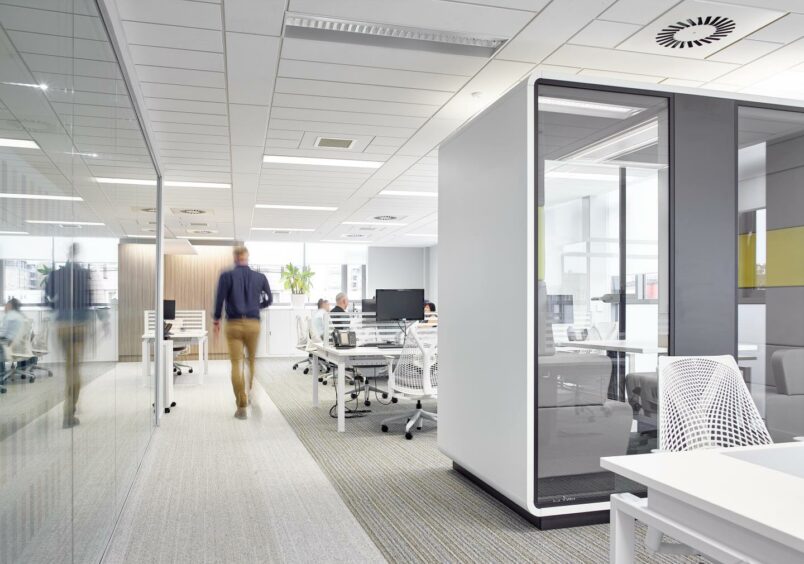
The £700 million raised for the Crown Estate at last month’s ScotWind auction highlighted just how much interest there is in the renewables sector in Scotland.
If ever there was a sector where “Scotland” and “world-leading” apply, it is this one. The north-east is on the cusp of another exciting chapter with the welcome addition of renewables to the energy mix with more and more global, national, and local businesses seeking to capitalise on this opportunity.
In Scotland, the skills and expertise already exist in the energy sector to tackle these new challenges. We have people entering the sector with different aspirations and world-views, and who see a career in the renewables sector as being more aligned with their values. And if you’ll excuse the parochialism, we have the raw materials (plentiful wind and wave / tidal power) on our doorstep here in the North of Scotland. All that might be missing, based on the story to date with wind turbines, is increased fabrication opportunities (not capabilities) to serve this sector. That’s for another day and another author, however.
What does this have to do with my own area of interest, workplace design? The ability to transition from a carbon-based energy viewpoint to one that will increasingly also include greener sources is underpinned by flexibility. Twenty five years ago, when I set up Space Solutions in Aberdeen to serve what I saw was a gap in the local market, many organisations were seen as being hierarchical and static, and this was often reinforced by the very traditional design of their workplaces. The dual aspect, corner office was almost the first space marked on the plan and automatically earmarked for the chief executive. “Big is beautiful” was part of the design lexicon alongside chrome and mahogany.
From speaking to our consultancy and design team over recent (pre-pandemic) years, there was a feeling of the same old story when trying to push the boundaries with some clients when it came to workplace design. Nodding heads in agreement on the client side of the table when we introduced the potential benefits of new ways of working – moving from a culture of “command and control” to one of “support and trust” (with all the policy, technology and physical mechanism to help with this transition) – but when it came to implementation of said ideas, there was a real sense of decision-makers not being confident that their organisation was mature enough to take such a significant step.
There were outliers of course, those who knew about Lean and 6-Sigma and understood that it was not just a process methodology but a philosophy that could also show itself in the way workplaces were designed. Spaces to support spontaneous interaction and multi-disciplinary problem-solving became more critical in these new workplaces. Technology helped – it typically does when used properly – to support creativity.
Necessity is indeed the mother of invention and the challenges thrown up by the current pandemic certainly couldn’t have been avoided. Our workplace team have noticed a seismic shift in the attitudes of some clients. The types of workplaces we had been discussing with them now seemed not five or 10 years down the line, but within immediate reach (and definitely within the scope of the next office move or refurbishment).
It was, in a sense, a reinforcing of our central message about the importance of a well-designed workplace and for a business like Space Solutions, the past two years have been some of the most interesting times since we began back in 1997. Our consultants and designers have welcomed and responded to the challenges, and personally I am really excited about the next five years as for us, change is a good thing. Change means new ideas and new opportunities.
As mentioned above, the mindsets that will allow any business to capitalise on new and existing opportunities within the energy sector, are built on flexibility – both at an organisational level (being able to quickly re-allocate resources) and at an individual level (learning new skills and applying old skills to solve emerging problems). Those businesses who are open to new ideas will be the ones to thrive.
Where will the renewables and wider energy sector be in 25 years’ time? It’s a difficult question. We really need to go back 25 years from the present day and understand the degree of change rather than looking forward from today’s perspective. Undoubtedly there will be lots we cannot foresee, but as ever, there will potentially be a lot that is quite familiar.
Where will Space Solutions be by the time we celebrate our 50th birthday? I sincerely hope we’ll still be challenging our clients, still designing engaging and flexible workplaces, and I still hope we’ll be supporting Scottish industry as they tackle global challenges.
 © Supplied by Space Solutions
© Supplied by Space Solutions